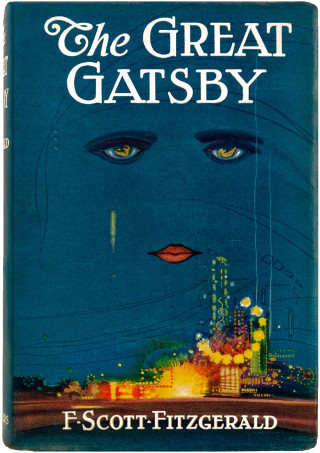Fitzgerald was raised in St. Paul, Minnesota, and educated for the most part in Catholic schools. He described himself as a “Chestertonian Catholic” while at Princeton but soon abandoned the faith, though he was married in a chapel of St. Patrick’s Cathedral in New York City. Identified as a spokesman for the licentious era of jazz, speakeasies, and flappers in the 1920s, Fitzgerald was denied a Catholic burial by the Archdiocese of Baltimore when he died in 1940. Writing about Gatsby, few critics seem to discern anything specifically Catholic in the novel’s narrative design or symbolism, and most dismiss the religious references as window dressing.
In a recent New York Times article, A. O. Scott argues that the novel’s enduring popularity has told “us about how we see ourselves” over the past hundred years. First there was “Jazz Age Gatsby,” “folded into a world of Prohibition-fueled naughtiness, Wall Street-enabled materialism, and the anomie that followed the Great War and the great influenza pandemic.” In Scott’s scheme, that was followed by “Existential Gatsby,” a postwar understanding of the novel as a “commentary on the predicament of modern man…. [Gatsby’s] death, an act of senseless violence, is a textbook case of the absurd.” Eventually we arrive at “Hip-Hop Gatsby,” introduced by Baz Luhrmann’s 2013 film version with a soundtrack provided by hip-hop mogul Jay-Z. “Like the jazz of the 1920s,” Scott contends, “hip-hop is a Black American musical idiom that has become the soundtrack of the era, a complex, fast-evolving art form freighted with aesthetic possibility.” Jay-Z, like Gatsby, “is a self-made man, a one-time dealer in illegal substance who has ascended to the highest levels of wealth and power.” Scott argues, quoting the critic Alonzo Vereen, that Gatsby’s “American identity is so ambiguous that the students could layer on top of it any ethnic or racial identity they brought to the novel. When they did, the text was freshly lit.”
Curiously, one of the ways the novel tells us about how we see ourselves—namely, how Catholicism has influenced American identity and literature—is not mentioned. That seems an odd oversight since Gatsby’s character first took shape in Fitzgerald’s imagination for the short story “Absolution,” arguably his most explicitly Catholic piece of writing. The story, about a young boy’s difficult family, his failed effort to tell the truth in the confessional, and a troubled priest, was an initial exploration of Gatsby’s humble Midwestern roots. Fitzgerald cut it from early drafts of the novel, turning it into a separate, seemingly unrelated story. For the novel, he wanted Gatsby’s past to remain more obscure.
